Steve helped plant the mountain biking seed in Borneo a decade ago. Visiting again for the first time, he wondered if it had taken root and flourished.
Words Steve Chapman Photography Steve Chapman and Maria Clayfield

Many moons ago an opportunity came up for me to move to Malaysia, specifically Sabah in North Borneo. The island of Borneo is made up of three nation-states, namely Indonesia, the kingdom of Brunei, and Malaysia. Malaysia has two states on the island: Sarawak and Sabah. I moved there midway through 2011 and helped to set up a mountain bike tour company called Bike Borneo. After two and a half life-changing years there, I moved back to the UK in late 2013.
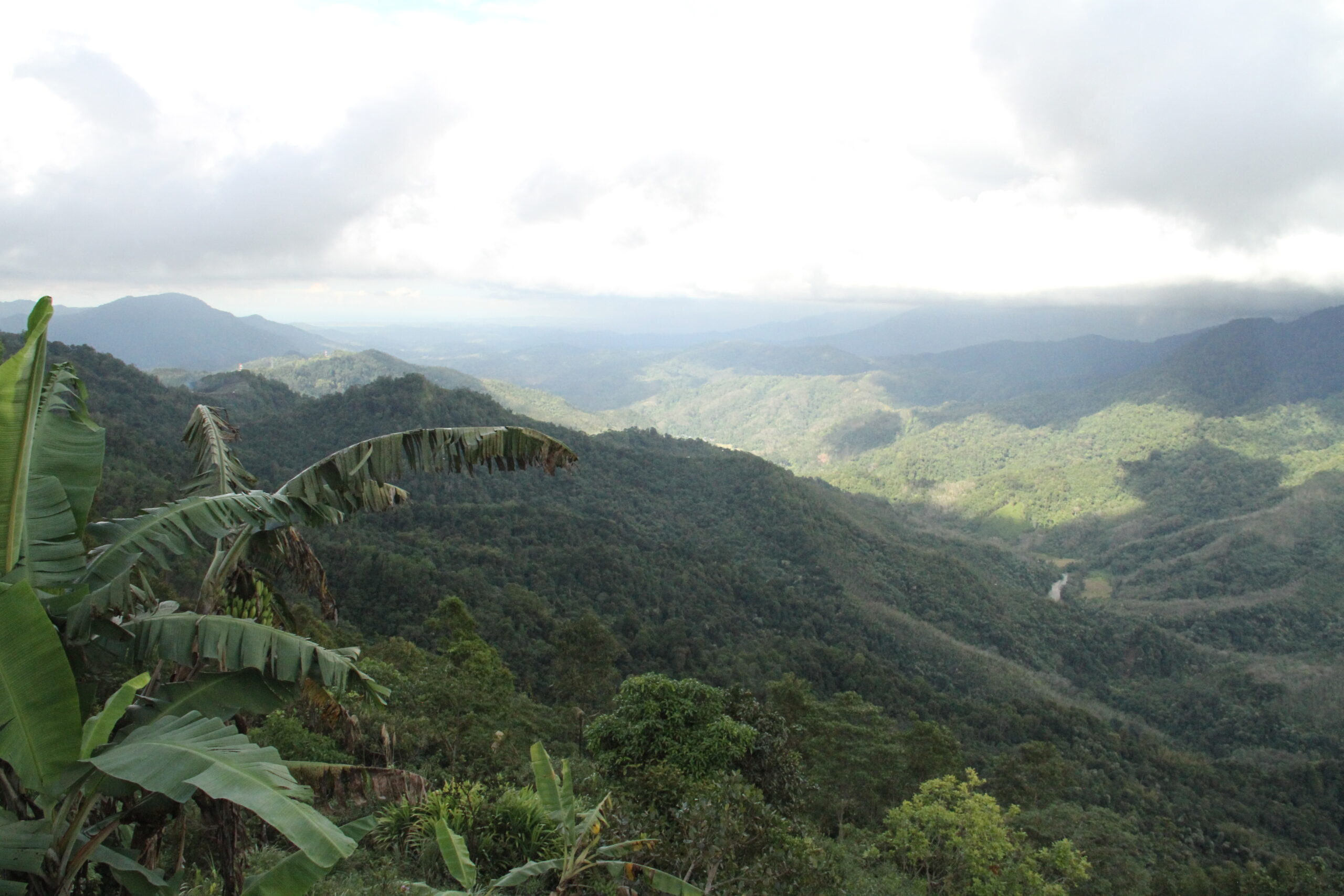
I’d always wanted to go back and had planned a visit in 2021, but Covid slammed the brakes on that idea. Finally, in January this year, the opportunity came up to head out there again. I was keen to get back and see how much things had changed in ten years, especially in mountain biking.
Latest Singletrack Merch
Buying and wearing our sustainable merch is another great way to support Singletrack
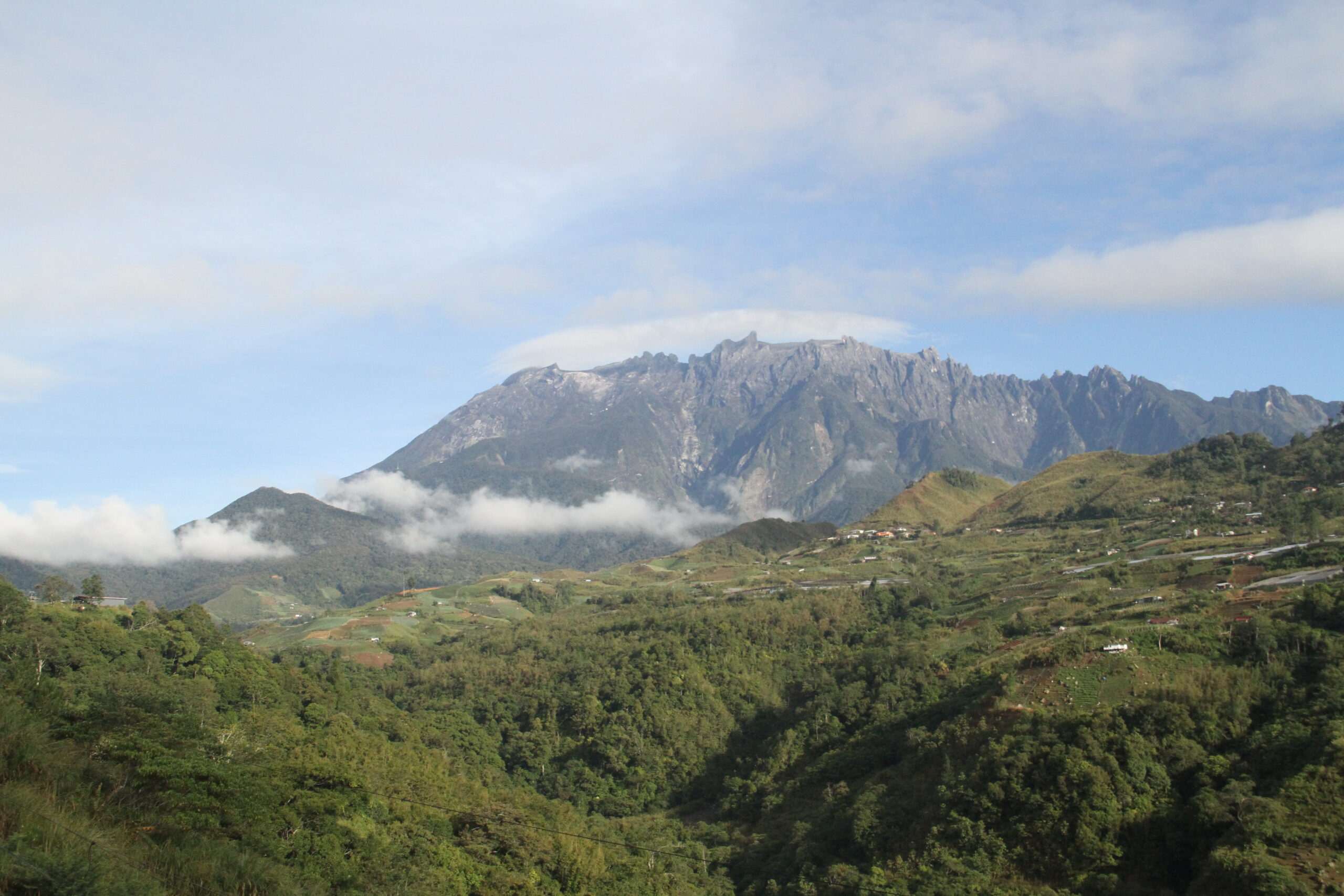
In January 2023 my long-suffering partner Maria and I packed our bike bags and headed east. We had some big plans as we were fortunate enough to have the whole month dedicated to adventuring.
When you think of places to go and ride your bike, Sabah might not be the first one that comes to mind. In fact, there’s a chance you might not even have heard of it at all. It’s a long old way from the UK, it’s close to the equator and it’s bloody warm, with temperatures often around 35°C and sweaty! However, the riding out there is amazing, especially once you get into the mountains. The landscape is, in places, like the Lost World… massive dipterocarp trees, huge fan-shaped leaves, an abundance of flora and fauna. It is, simply, growth gone mad.
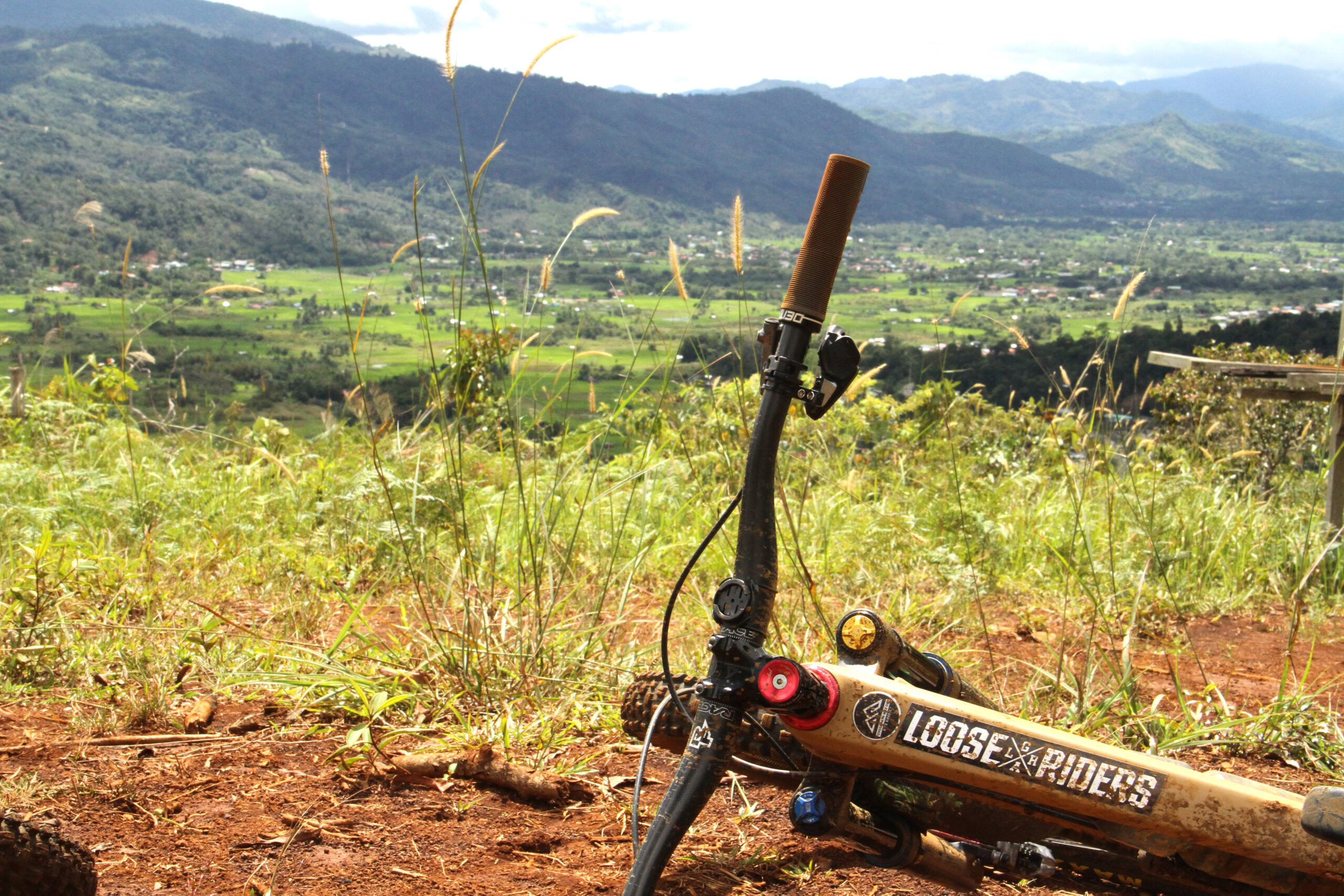
Mountain biking grown up
When I lived in Sabah mountain biking there was in its infancy. People had mountain bikes, but often shonky ones imported from China. It was certainly possible to get your hands on the larger brands, but it was more difficult and involved expensive logistics. There were bike shops and you could get decent parts if you had the money and were happy to wait a while, but there wasn’t the demand to justify importing any volume of the larger brands.
There was a fledgling race scene: just a few grassroots cross-country events put on by some keen locals, but lacking a regular series. My first cross-country event there featured a finish line held up with bits of bamboo and was essentially a lap around a village, a climb into a rubber plantation, and a doubletrack descent back down to the finish.
It was funny, but it all felt familiar – I felt like I’d experienced this before. It was a feeling of excitement at the possibility, knowing that there was more to come. The groundswell that feels unstoppable when you’re in the right place at the right time, just before something big happens.
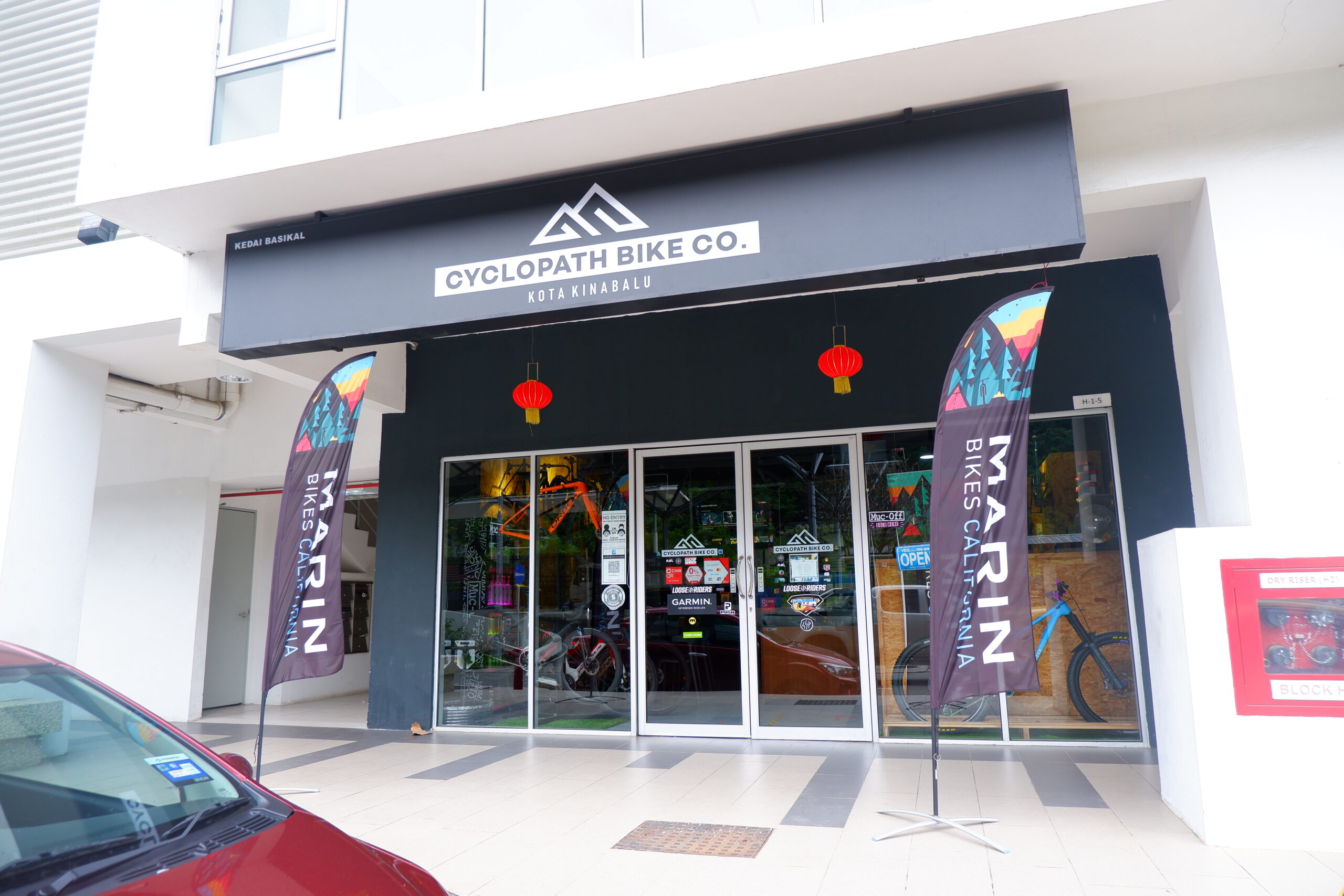
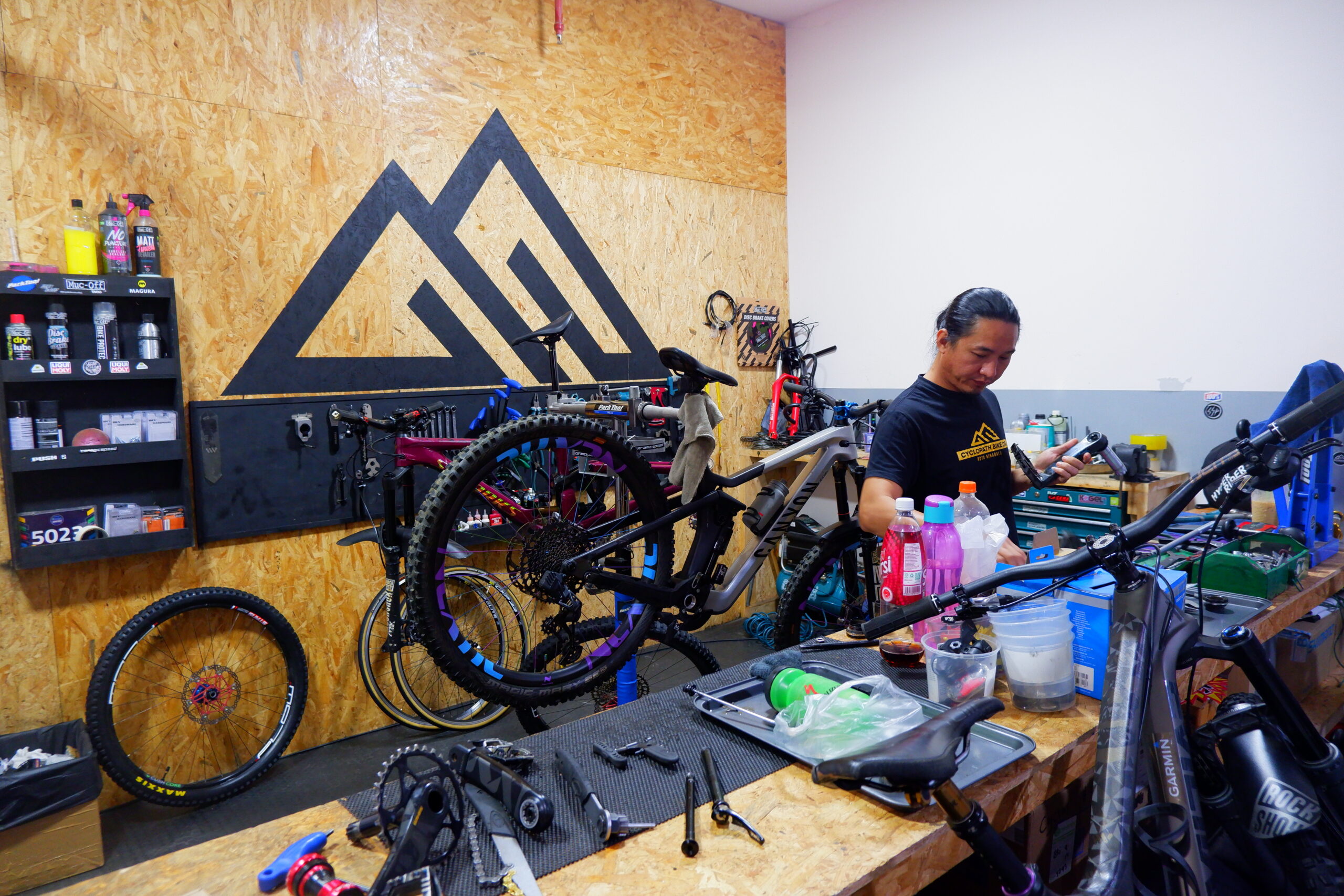
Of course, a lot happens over ten years. I’d kept in touch with Christian who had taken over from me at Bike Borneo – he’d grown the business and mountain biking tourism had increased in popularity. But it was through social media that I could see that a scene was really gathering pace, especially around downhill and enduro. Sabah had even got itself a chapter of ‘Loose Riders’, the Kota Kinabalu (KK) chapter was pretty big and had even organised a weekend enduro festival that takes place in October.
Getting loose in the jungle
Kota Kinabalu is the capital of Sabah – a city of a quarter million people. Before heading there, I’d got in touch with Izam from Loose Riders Sabah, planning to meet up with him and the Loose Riders a few days after landing. Jet lag always knocks me sideways so we spent the first few days in a bit of a stupor. We arranged to meet at Bukit Padang, a spot I used to ride quite a bit. This is government-owned land which is kept as a public space right on the fringes of KK. This spot has evolved organically over the years by people going out with spades and just digging new features. People would just go and hang out up there overlooking the city and riding their bikes.
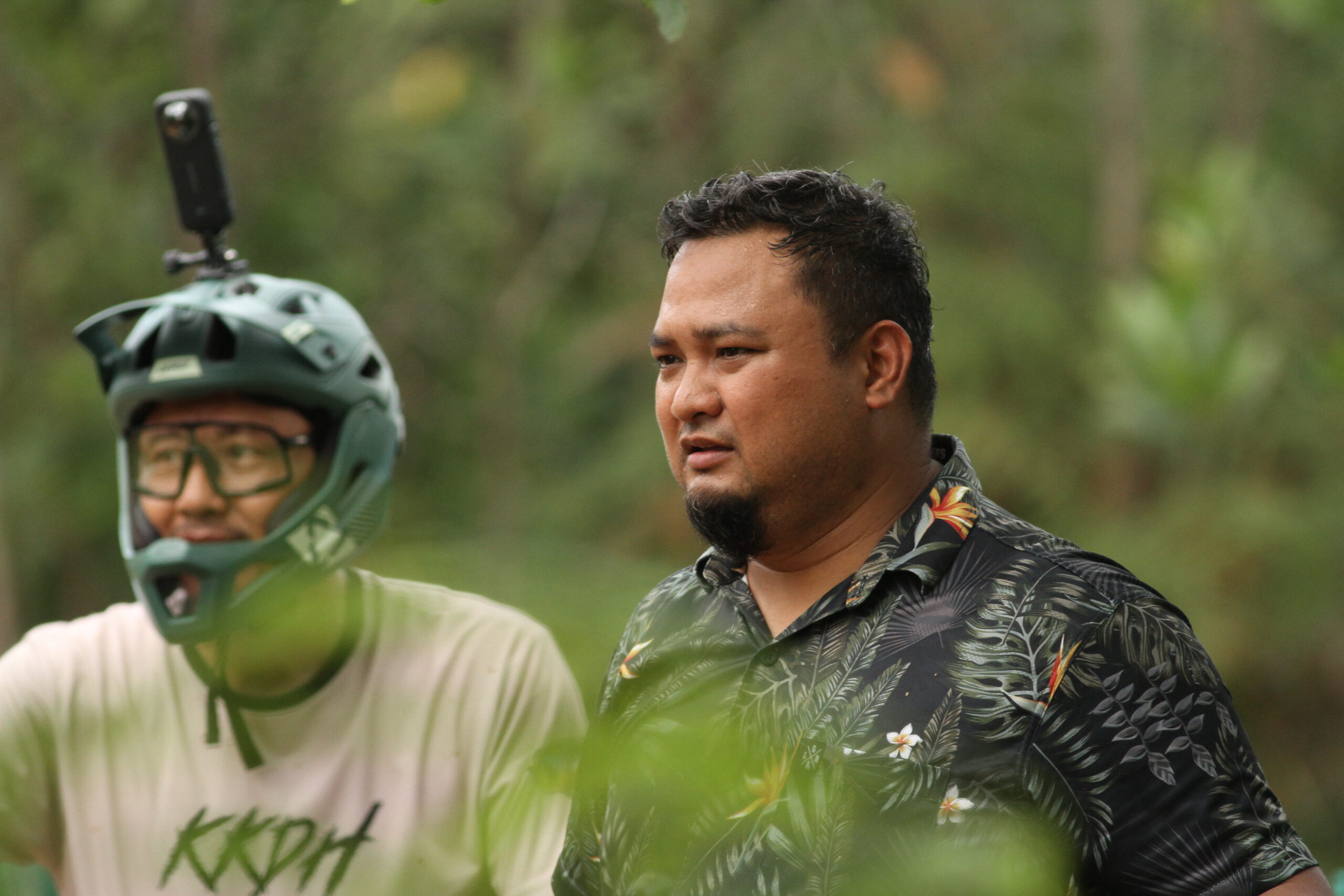
When I lived in KK, I lived about a mile away from this park and, despite only having access to a Trek 4500 hardtail, I’d go and mess about on the little jumps and get some laps in. The whole scene then was very reminiscent of mountain biking in the UK in the ’90s. You’d spend your time noodling about on a bike that was very inappropriate for the terrain, you’d try to get your hands on the latest parts to come into the little local shop, and you’d go out and build sketchy jumps with your mates. The park had that backyard feel and it was awesome.
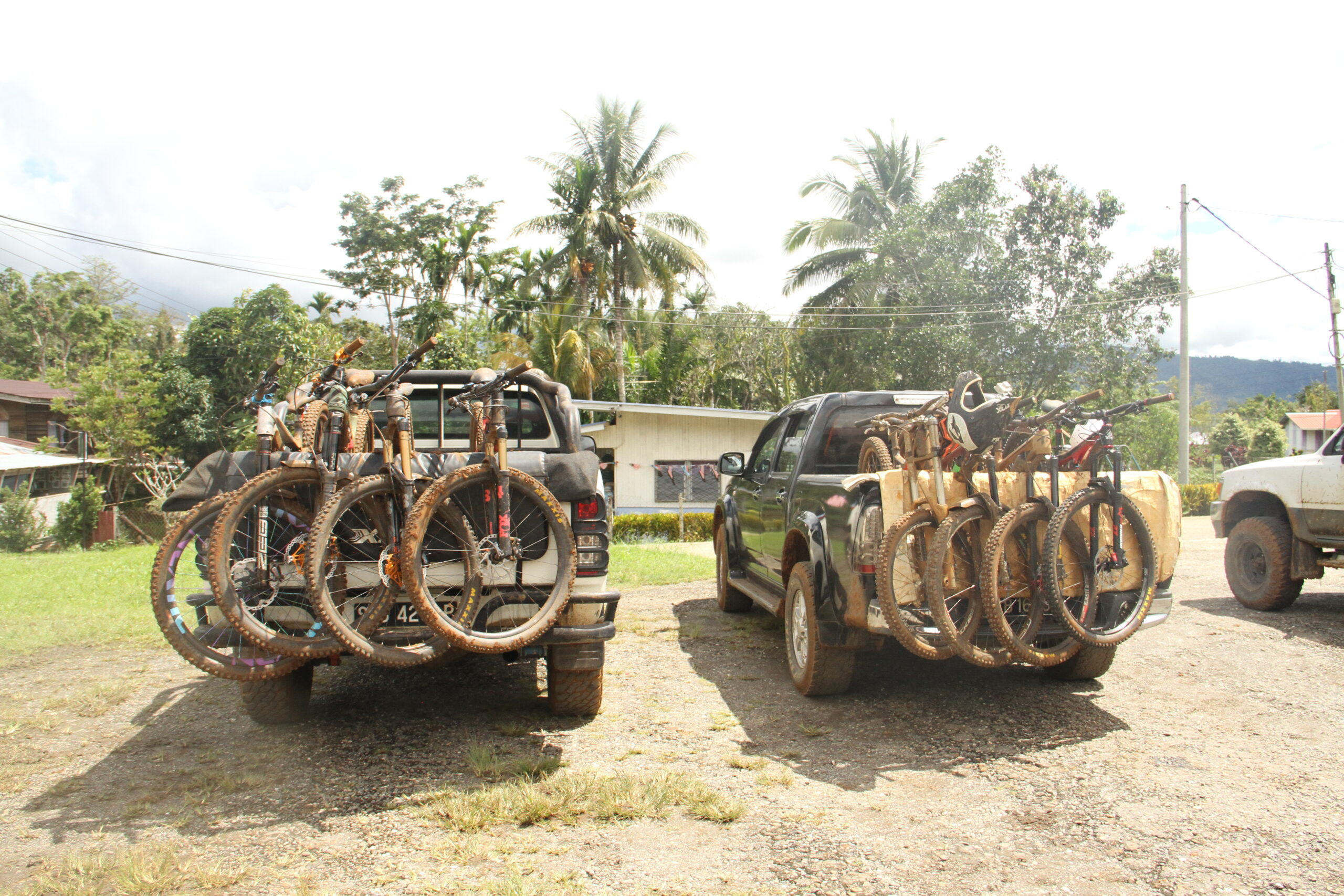

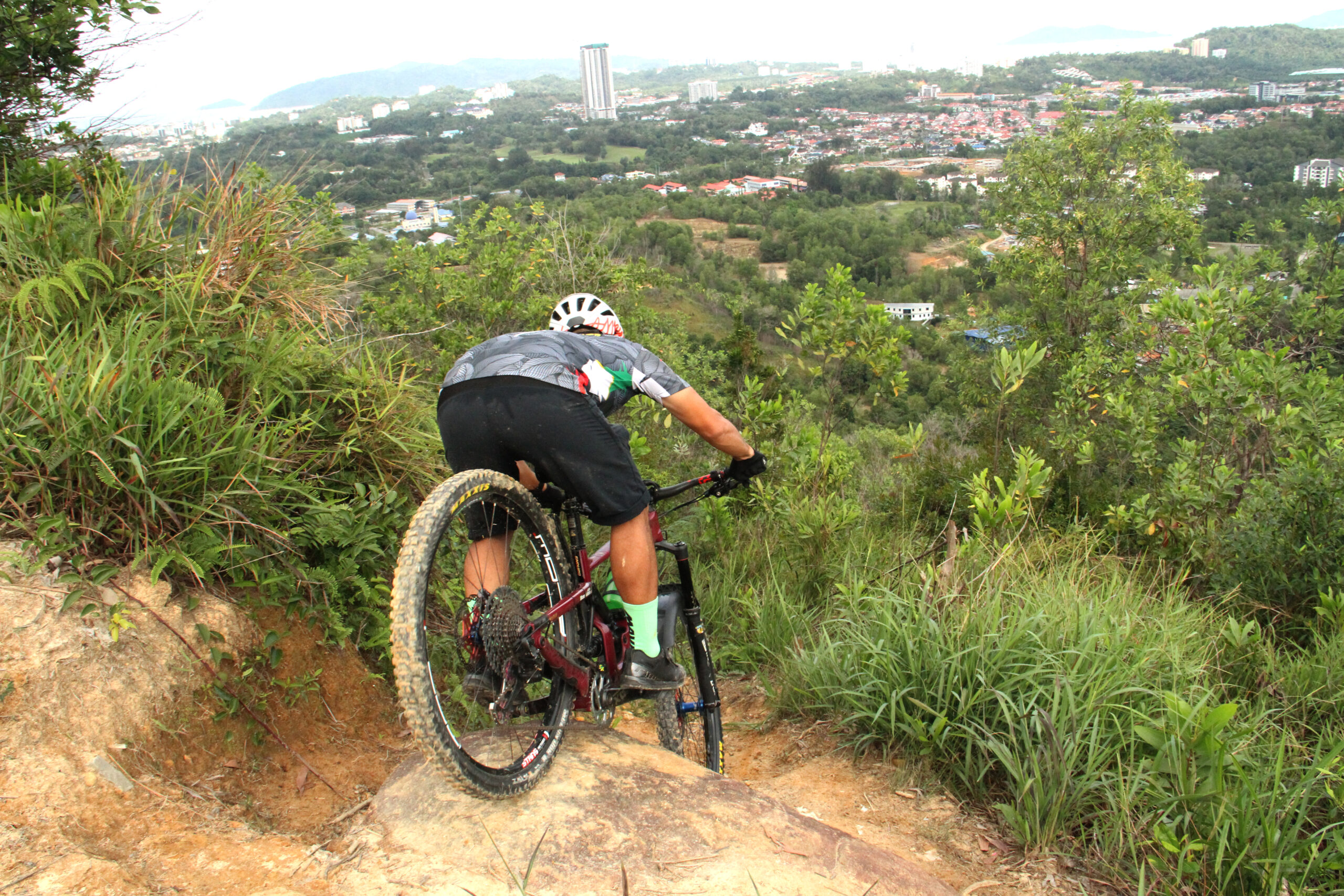
When I met the guys from Loose Riders Sabah, they were not mucking about! They pretty much all had tricked-out 4x4s, a smattering of very shiny, very expensive kit with niche brand bikes and were all absolutely shredding. After chatting with them for a while I discovered that five of them (Izam, Man, Katik, Picie and Fizi) own a bike shop in KK called Cyclopath, where they import Forbidden, Orbea, Marin and a bunch of other great stuff. A lot happens in ten years…
Dropping in after a decade
We kicked things off on some of the older downhill trails. These start right at the top of the hill with a viewpoint that looks west out over KK past Gaya Island in the Tunku Abdul Rahman Marine Park and out into the South China Sea. It’s a unique spot that feels surreal being this close to the city surrounded by some really fun, swoopy trails. Other than the occasional walker or runner you really don’t see many people up here. It’s a little oasis just far enough removed from the concrete jungle to catch your breath.
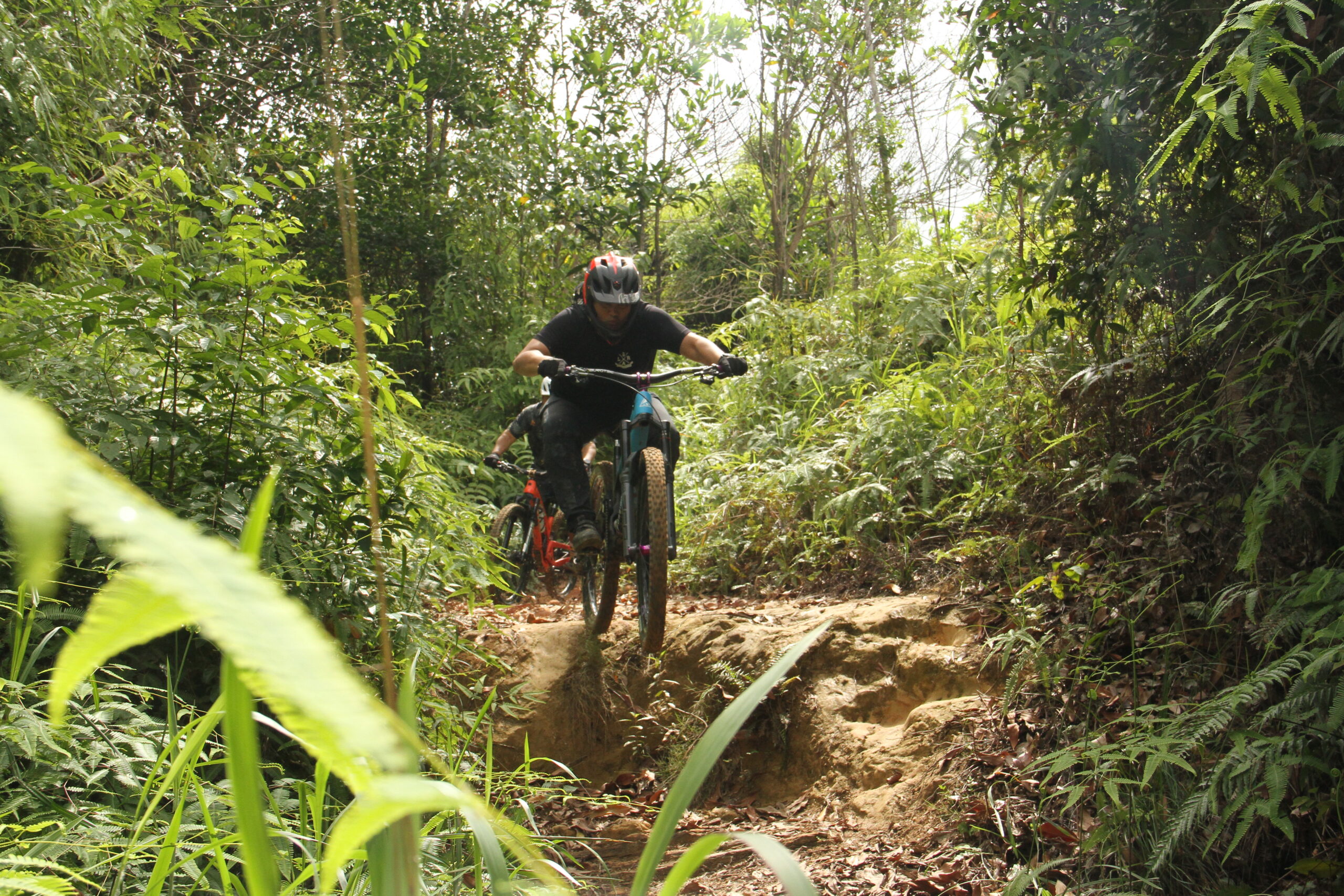
After sessioning some of the new stuff that’s been built we were joined by my old buddy Dan Badin, bicycle mechanic extraordinaire and grassroots mountain bike event organiser. We chatted about old times and some of the events he had coming up. Proper riding scenes need people like Dan.
A few hours later, we were all pretty hungry, so decided to go to the café. It’s quite cheap to eat in KK and little cafés and restaurants are everywhere. To the outsider, all these little places look the same, but there are subtle differences in food, prices and service that makes some places the places to be while the others struggle by with a few loyal locals. There is no shortage of choice though, and Izam was keen to take us to one he knew.
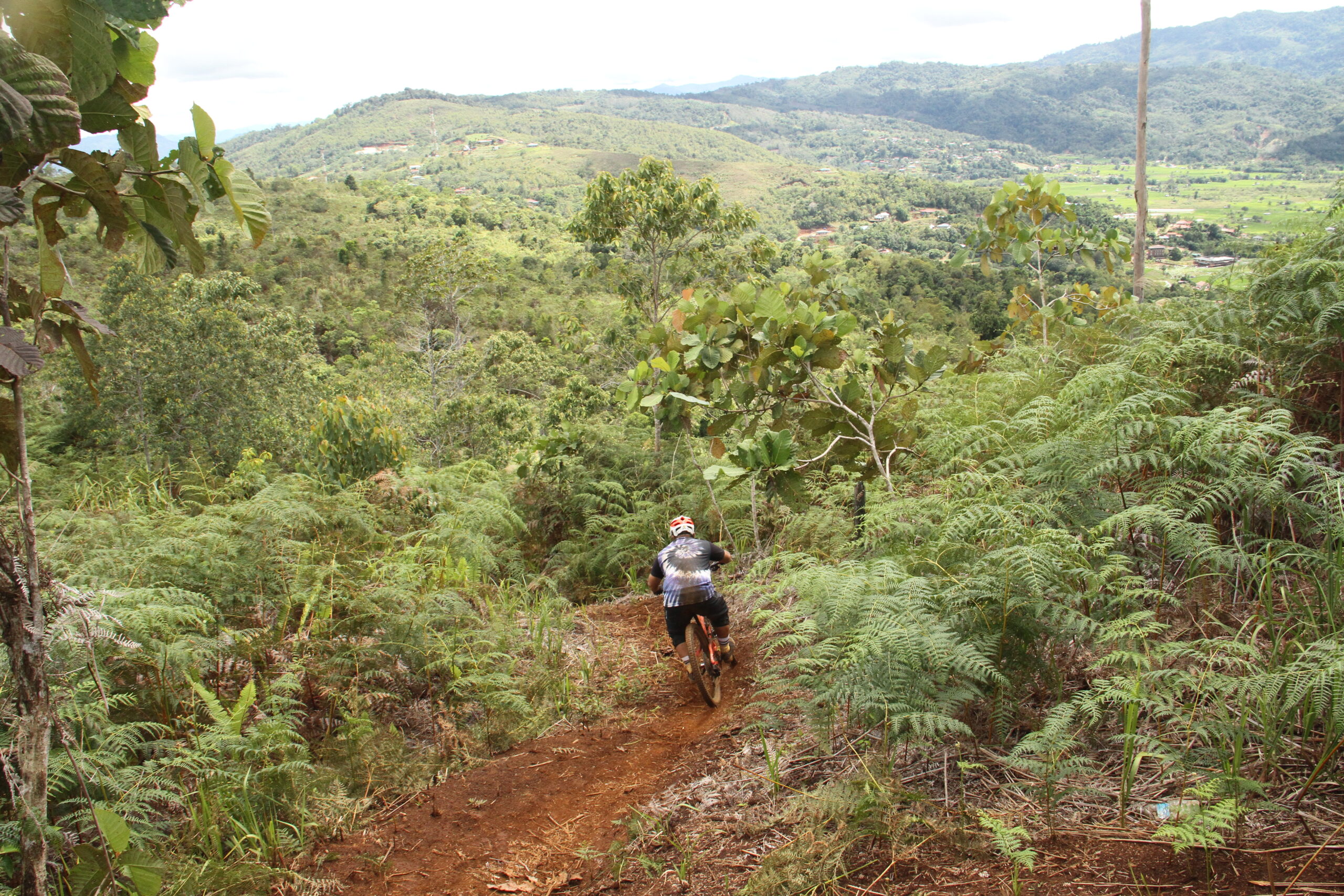
After heading out for some food and chat, the guys were excited to take us to a place they’d been riding up in the mountains, near Ranau. It’s about 100km from KK and takes you right past the tallest mountain in Sabah (and all of Malaysia, at 4,095m). Mount Kinabalu is a UNESCO World Heritage Site. It’s called Gunung Kinabalu in Malay, which roughly translates as ‘Sacred place of the dead’. It’s an elusive mountain, though – if you’re not an early riser there’s a good chance you won’t see it at all as it tends to be shrouded in mist by mid-morning.
Build it and they will ride, and buy, and snack
After plans were hatched in the café, the following weekend we found ourselves heading up to the National Park in the direction of a dropped pin in a sea of green. We planned to meet the guys at what is known as Kilimu Bike Park. A bike park in Sabah was a surprise to me; ten years ago this would have seemed very unlikely given the infancy of the riding scene then.
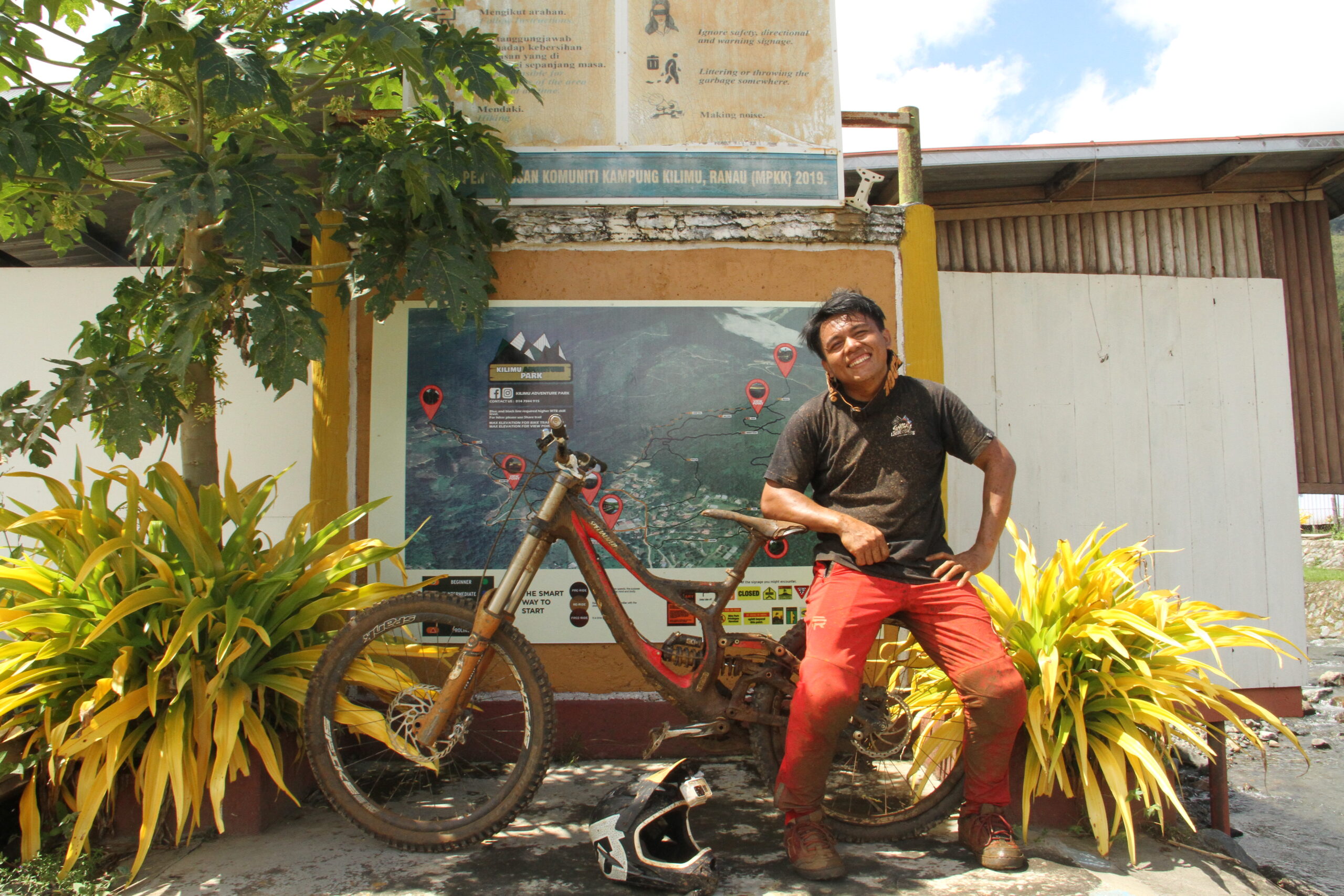
Fast forward that decade and things were really happening. The guy behind it all, a diminutive and very smiley chap called Kharizel, was waiting for us. We were running a little late because the main mountain road that crosses the island had been washed away the previous week. It’s a testament to how regular an occurrence this is that in the week since it happened, not only had a temporary metal bridge been built in a slight diversion, but enterprising locals had already started populating the new route with makeshift vending kiosks to capitalise on the now slow-moving traffic.
When we finally arrive we meet a bunch of new riders we hadn’t met the previous week at Bukit Padang so in all there were probably 15 of us – the guys from Loose Riders Sabah in KK, some who are local to the bike park, and some guys who were visiting from Singapore. After greeting everyone we set about loading the bikes into the back of our uplifts – four trucks driven by local guys who for 100RM (about £20) would spend their day running us back up the hill, all day! This was a micro-economy created by Kharizel. Not only had he got buy-in from his whole village who owned the land, but he’d also included anyone local who owned a truck to make some money off these crazy mountain bikers. It worked perfectly and everyone was stoked about the situation.
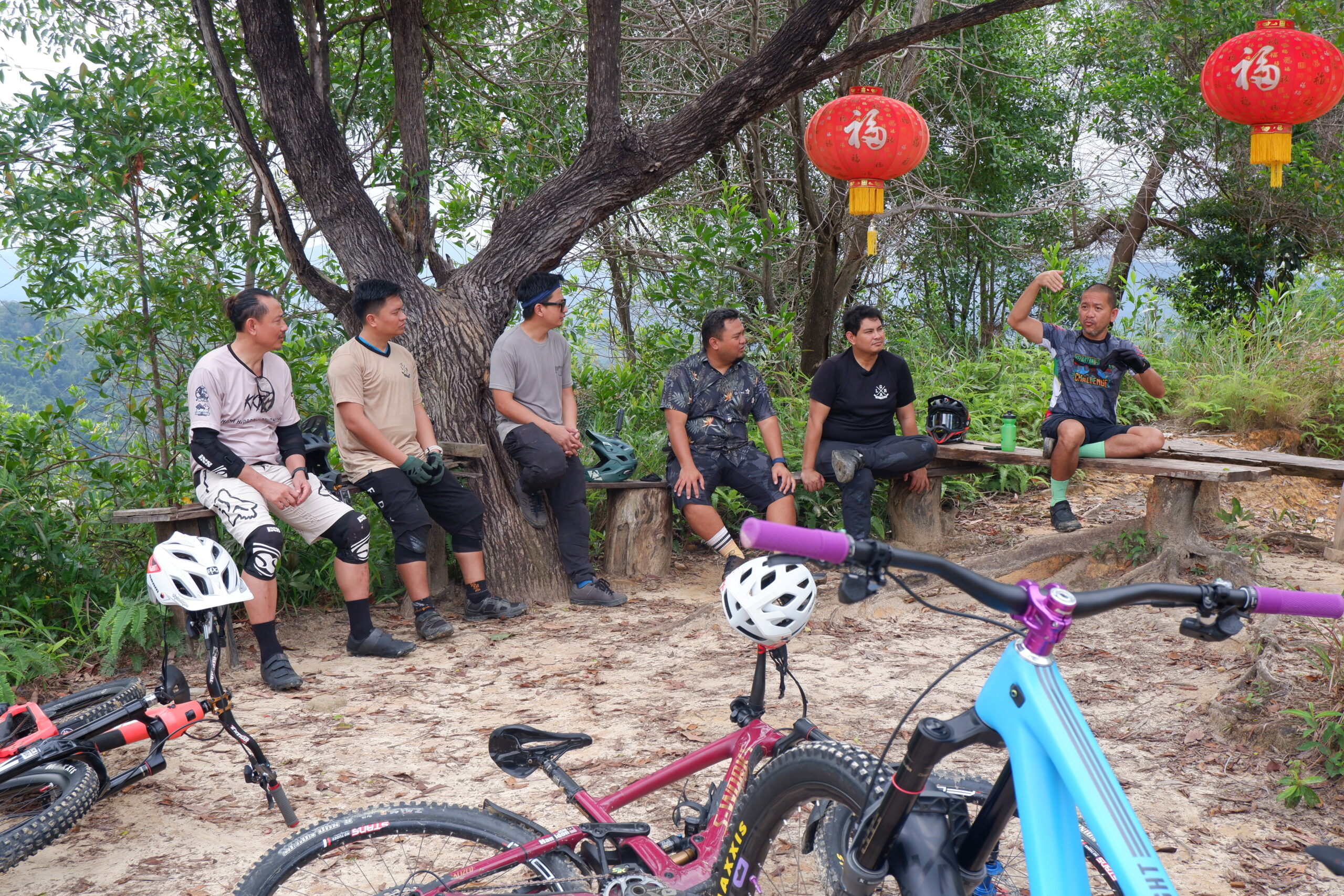
It’s one thing having the land, it’s a whole different story when you start to think about building trails here. It’s not primary rainforest in this area, but it comprises thick vegetation interspersed with rubber plantations and small outcrops that villagers have cleared to grow food. The hillside that Kharizel chose to build his bike park creation on is steep and technical; it’s difficult to even get to, let alone to start building. Fortunately for us and the bike park, Kharizel is a dab hand with an excavator – it is quite literally his day job, so when the stars align and you have free rein on an amazing piece of land and you own a huge excavator, you know some good stuff is going to happen.
No room for old cross-country
In all, Kilimu Bike Park has around 10km of trails thus far, all of the downhill/enduro variety… these boys won’t be cutting in cross-country loops anytime soon.
As we get to the top of the hill for our first run I start to feel a little anxious, they were all sporting 150mm+ rigs: some downhill set-ups, some enduro. But all with significantly more downhill-capable bikes than my 120mm travel Orbea Oiz, which is very much a cross-country bike chosen to allow me and Maria to do some bikepacking while we were there. Looking around at all these locked and loaded bikes I’m thinking ‘I’m going to get my ass handed to me’.
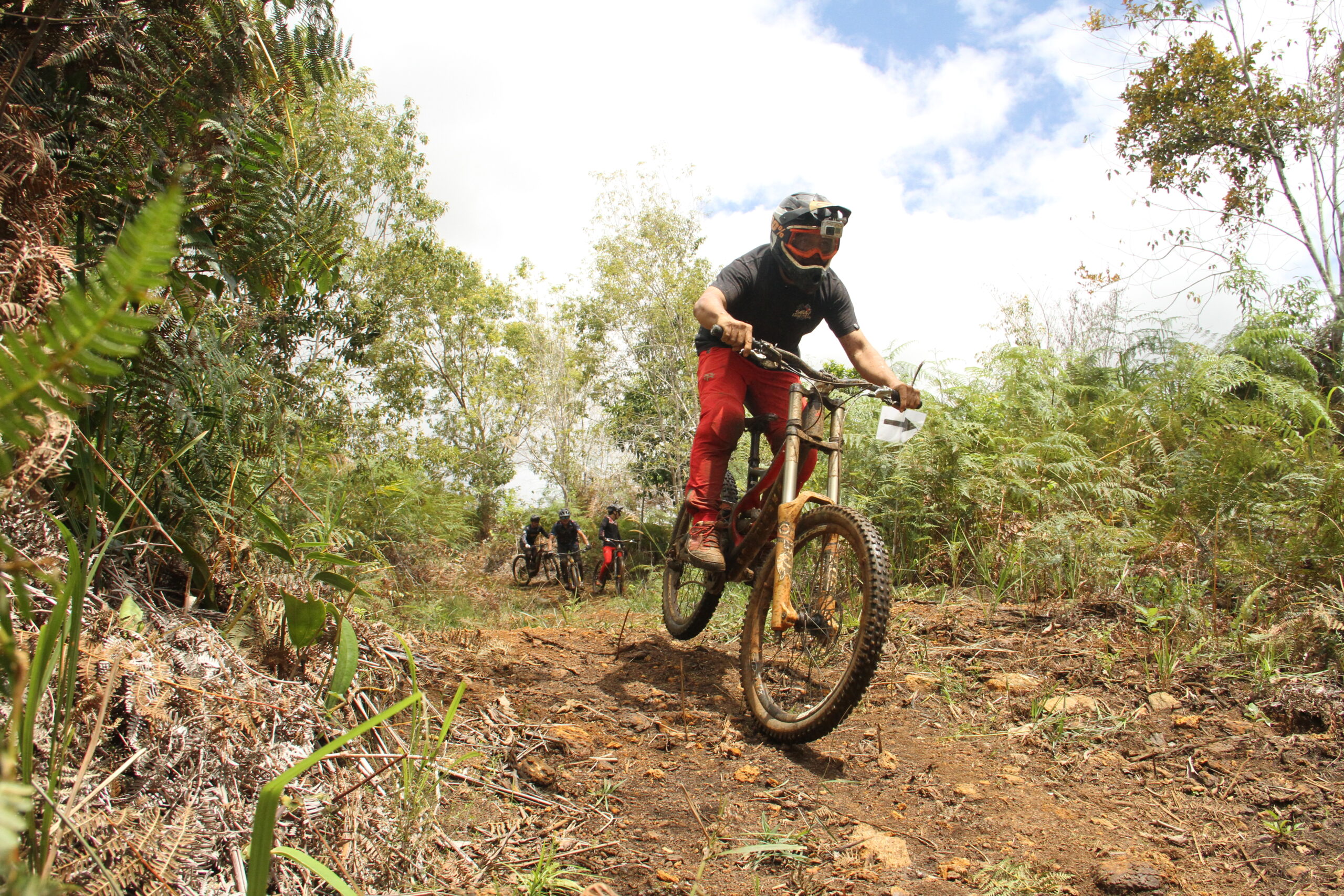
Kharizel looks fast, he’s quite a small guy and is lean and muscular with the look of someone who will happily leap before he looks. With this in mind, of course, everyone insists that I follow him down for the first run of the day. He sets off at a decent enough pace – the ground is not that rough, but it’s wet. Obviously I’m running a set of partially worn Maxxis Rekon Races so I’m all over the shop trying to hold his wheel just as the track gets steep and hectic. Kharizel has created something special on the side of his hill.
So often berms are built wrong and just become a pile of dirt to the side of the best line down the hill, but these were perfect, catching you as you came into them and then firing you out into another perfectly crafted corner. This was ridiculous!
After a fairly open section that could be mistaken for the UK (just on a very hot and humid day), we went into a really tight piece of singletrack with watercourses running across it, bordered with bamboo that flashes past in my peripheral vision. Kharizel started slowing down up ahead (uncharacteristically) and shouts something that I don’t quite catch, then before I knew it, I was sliding along on my arse with my bike screeching to a halt next to me. An exposed bit of bedrock that is exactly the same colour as the soil, but ice rink slippy. Kharizel says “Rock, slippy.” I nod ‘Noted!’
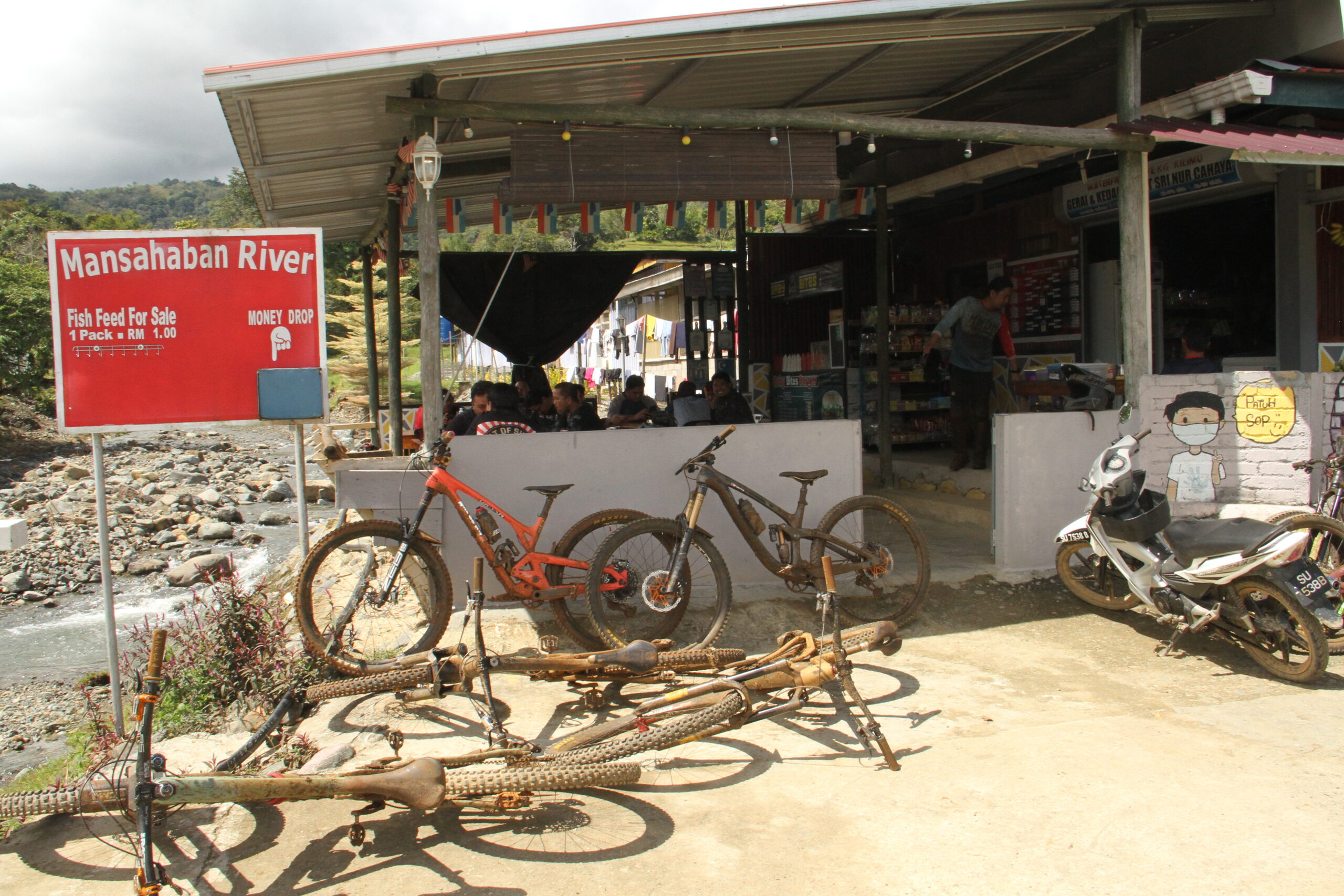
We lap the hill maybe two or three more times, each time taking a new line of perfection before everyone starts to flag. The combination of heat and humidity has a unique way of wearing you down to a quivering mess. We have one final run and then ride back into Kilimu, passing some amazing houses clinging onto the side of the hill. Once back in Kilimu there’s a perfect little café next to the river. At the end of the day this is an ideal place for us all to get together, grab a cold drink and some carby goodness while sharing stories of near-misses and over-the-bars moments. Memories are made in places like this…
After stuffing our faces and drinking cold drinks next to the river, everyone is buzzing. We’re sharing stories, showing photos and sharing video clips. This mountain bike family is huge… you can fly around the world into new cultures and the language and nuance are the same. Sabah has a lifelong place in my heart, I can’t wait to see what the next ten years will bring!
Terima kasih Sabah.





